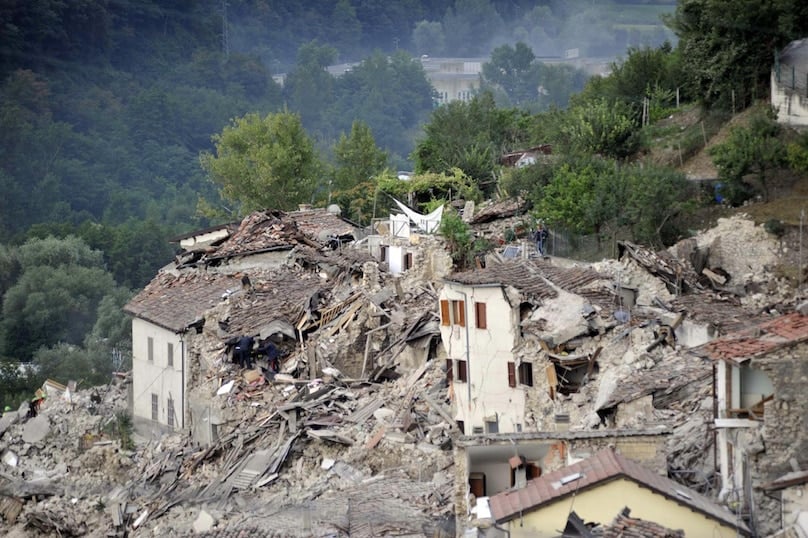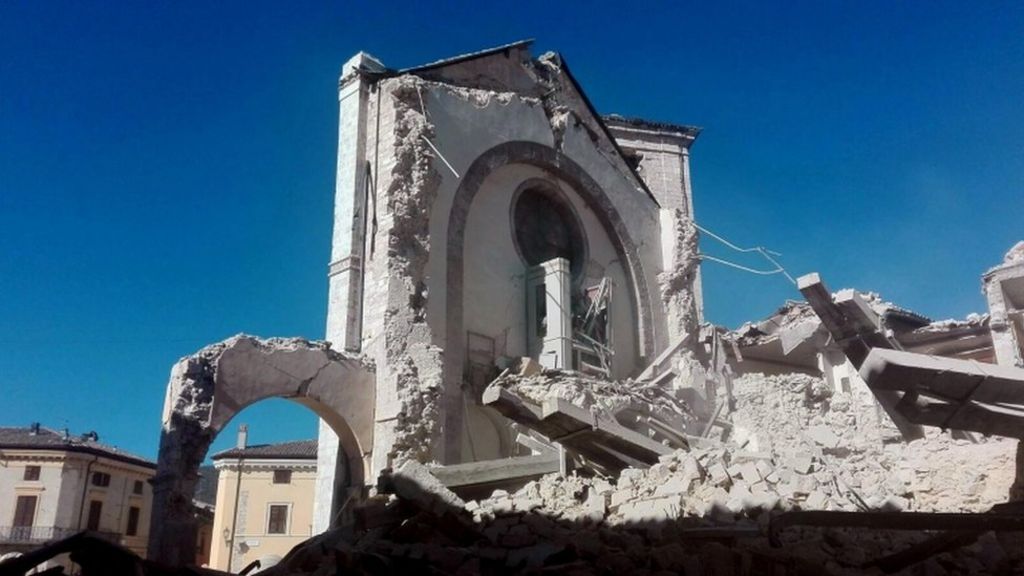BLOG 3 - EARTHQUAKES AND SEISMIC ACTIVITY IN ITALY
Due to its location along the boundaries of the Africa and Eurasian plates as well as the fault lines along the Alps and Apennine Mountain range, Italy has faced numerous earthquakes throughout its history. In the last hundred years alone there have been at least 15 devastating earthquakes, such as the L'Aquila earthquake in 2008 and the Messina earthquake of 1908 that killed over 70,000 - yes, 70,000 - people. One of the most recent of these occurred in 2016 when an earthquake with a magnitude of 6.2 almost completely destroyed the commune of Norcia in Central Italy, claiming nearly 300 lives (Samuelson, 2016).
Examples of the destruction caused by the 2016 Norcia quake. The town was almost completely destroyed, and the monastery of Saint Benedict was turned into ruins.
These earthquakes are caused by high amounts of seismic activity along the tectonic plates. In fact, the Alps - where many of the most devastating of the quakes have occurred - formed as a result of the African and Eurasian plates clashing together (Merelli, 2016). Every year, these plates push together more and more, and as the Alps coincide with the Apennines the area is at high-risk for seismic activity. Because Italy features so many ancient buildings that are unstable, large earthquakes usually cause them to collapse and result in high death tolls. Sources
Merelli, Annalisa. "What Makes Italy so Frighteningly Vulnerable to Earthquakes." Quartz, https://qz.com/766295/why-italy-has-so-many-earthquakes/, 2016.
Samuelson, Kate. "Why Italy Has So Many Earthquakes." Time Magazine, https://time.com/4464118/italy-earthquake-seismologist-explains-why-common/#:~:text=Over%20the%20last%202%2C000%20years,7.1%20and%20claimed%2070%2C000%20lives., 2016.


Good research this week. What are their mitigation measures for earthquakes?
ReplyDelete